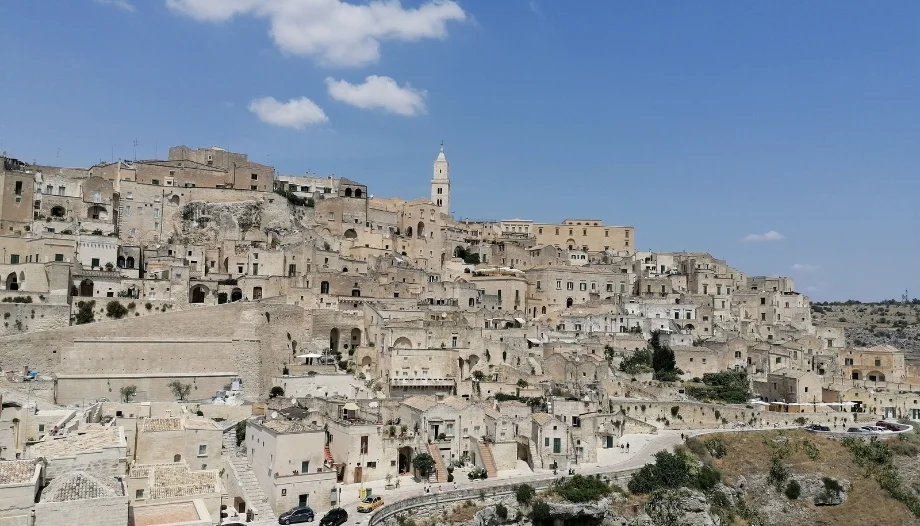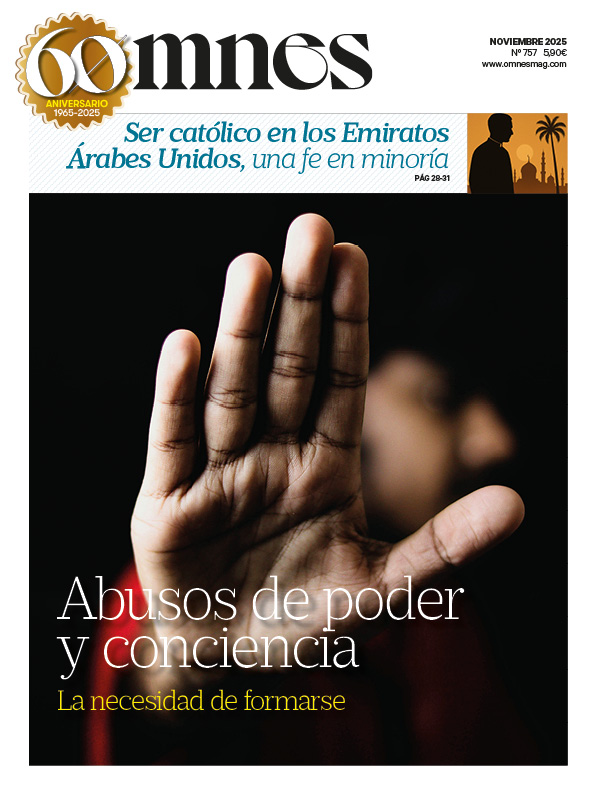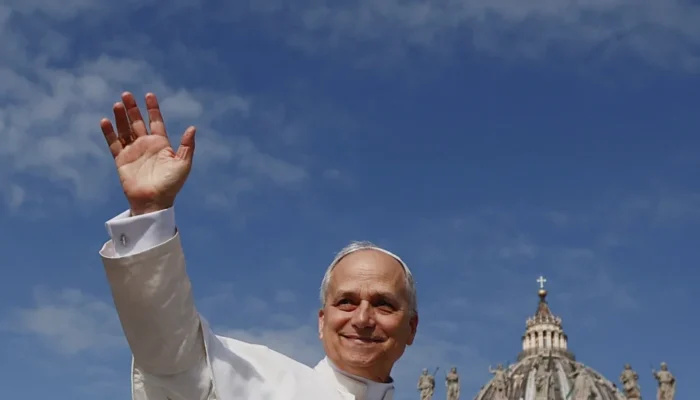It is well known that Mel Gibson has begun shooting the sequel to his famous film «The Passion of the Christ» (2004), whose most striking scenes were filmed in Matera, Italy, a city famous for its Sassi and for its architecture and landscapes, which are deeply reminiscent of those of the Middle East. «Resurrection» should be released in 2027 and will also be shot in Italy, especially in Matera.
Being a native of this small region of southern Italy, I can only rejoice: it is a little known region, but very rich in history.
In my birthplace, Policoro (ancient Heraclea), in ancient Magna Graecia, Pyrrhus, king of Epirus, fought against Rome using war elephants. From there comes the famous expression “Pyrrhic victory”: the Greek king won, yes, but with such heavy losses that today the phrase is used to indicate a futile success.
Also on the eastern coast of this region, in Metaponto, Pythagoras taught and founded his famous school. From Venosa, on the other hand, in the northwest, the Latin poet Horace originated. In the Middle Ages, Basilicata was chosen by Frederick II of Swabia to build some of his most famous castles.
A region not very large, yet so prestigious in antiquity, then fell for centuries into national and international oblivion, until Carlo Levi, a Jewish Italian writer confined here by Mussolini, described its peasant reality in «Christ Stopped at Eboli». At that time, Matera, with its Sassi, was visited by Levi, a few years before Palmiro Togliatti, leader of the Italian Communist Party, and above all Alcide De Gasperi, president of the Council, denounced the conditions of extreme poverty and degradation in which the inhabitants of Matera lived, calling them a “national disgrace”.
A millenary history
Matera is located a few dozen kilometers from my hometown. Considered one of the oldest cities in the world still inhabited (the oldest in Europe), it is a place where human history is continuously intertwined with peasant culture and faith. Its famous Sassi, carved into the limestone rock and inhabited since prehistoric times, are today recognized as a unique architectural heritage in the world. Not for nothing did UNESCO proclaim them a World Heritage Site in 1993, and in 2019 Matera was designated European Capital of Culture.
The cave settlements of Matera date back more than 9,000 years: first as natural cavities adapted by man as shelters, then converted over the centuries into real houses, stables and workshops.
In the Middle Ages, the expansion of the city favored the development of an urban grid on several levels: the roofs of the lower houses became streets for the upper ones. Each nucleus had its cistern, its small square and its place of worship. For this reason, in the 1950s, Matera was defined by the famous architect Le Corbusier as an “organic city”: a spontaneous urban model that integrates man and nature and responds perfectly to the needs of the community.
Between East and West
Matera is also a crossroads of cultures. For centuries, southern Italy was under Byzantine rule (the name Basilicata derives from the Greek «basilikos», Byzantine imperial governor), also in the rite, and there is no lack of traces of monasteries and place names typically Greek, even in the devotion to the saints.
This happened especially after the arrival, between the 6th and 11th centuries, of monks fleeing the Byzantine East because of the iconoclastic persecutions. All of southern Italy welcomed numerous communities of Basilians, followers of St. Basil the Great (4th century), bishop of Caesarea and father of Eastern monasticism. They brought the Greek rite, which in Matera left deep traces in the frescoes of various rock churches: the Christ Pantocrator, the «Theotokos», the saints blessing “Greek style”, with two fingers half extended and three bent, symbol of the Trinity; while in other churches the iconography and the blessing are “Latin style”. There are even exceptional cases, such as the cave church of Santa Lucia alle Malve, where figures of saints blessing according to both rites coexist: an anticipated ecumenism.
In the city there are more than 150 cave churches distributed between the Sasso Caveoso (the oldest part of Matera, completely carved into the rock), the Sasso Barisano (the more recent and built-up part) and the Murgia plateau, with its typical limestone landscape of canyons and ravines.
Among the churches not to be missed are Santa Maria de Idris, which dominates the city from above; San Pietro Barisano, the largest; and Santa Lucia alle Malve. These churches were not mere places of worship, but centers of community life and formation: their frescoes were authentic “visual catechisms”.
Daily life in the Sassi
Until the 1950s, the Sassi were inhabited by peasants, artisans and large families who shared small spaces with the animals. It is impressive to enter these caves (now inhabited again or open to tourism) that were kitchens, stables and workshops, with cleverly designed furniture: chests of drawers that turned into cradles, perfectly adapted utensils. It was a difficult life, no doubt, but rich in neighborly ties and a very strong social fabric.
I still remember, in my childhood in the 80's in a small southern town, the women who spent their days knitting at the door of their houses, while we, the children, felt like children of all, playing freely under the watchful eye of any mother or grandmother in the neighborhood, who knew how to reprimand, but also offer a generous piece of bread with oil and tomato for a snack.
We, however, had comfortable houses and did not live, like the former inhabitants of Matera, with the animals and without running water, electricity and basic services.
As a result, Carlo Levi and the politicians of the time generated so much indignation that in 1952 a special law was passed to evacuate the Sassi and move the inhabitants to new, purpose-built popular neighborhoods. Thousands of families were displaced.
For decades, Matera was remembered as “the shame of Italy”. And indeed, those who visited the city still in the 1990s can remember how the Sassi were dilapidated and dangerous. Nothing to do with the current context, in which they have become movie sets and people compete to stay there even for a few days, thanks to an immense work of restoration and enhancement that has transformed them into homes, diffuse hotels and museums.
Matera in the cinema: from the Gospel to the Passion and resurrection of a city
In recent decades, Matera has been chosen by various directors to set historical and religious films. The Italian Pier Paolo Pasolini, for example, shot there in 1964 «The Gospel according to Matthew», a realistic film in which he decided to use common people and peasant faces instead of professional actors. Mel Gibson acted similarly in his works. Even the movie «Nativity» was partially shot in this area.
But the Sassi do not exist in isolation: they are part of the rough and majestic landscape of Basilicata, already described and shown in numerous films, novels and television series around the world. For those who, like me, have left their land in search of new opportunities, returning to Matera and Basilicata means, in addition to a journey into the past and feasts of local cuisine, reliving a history through its stones and understanding that even from them life and hope can be reborn, when all seems lost.








